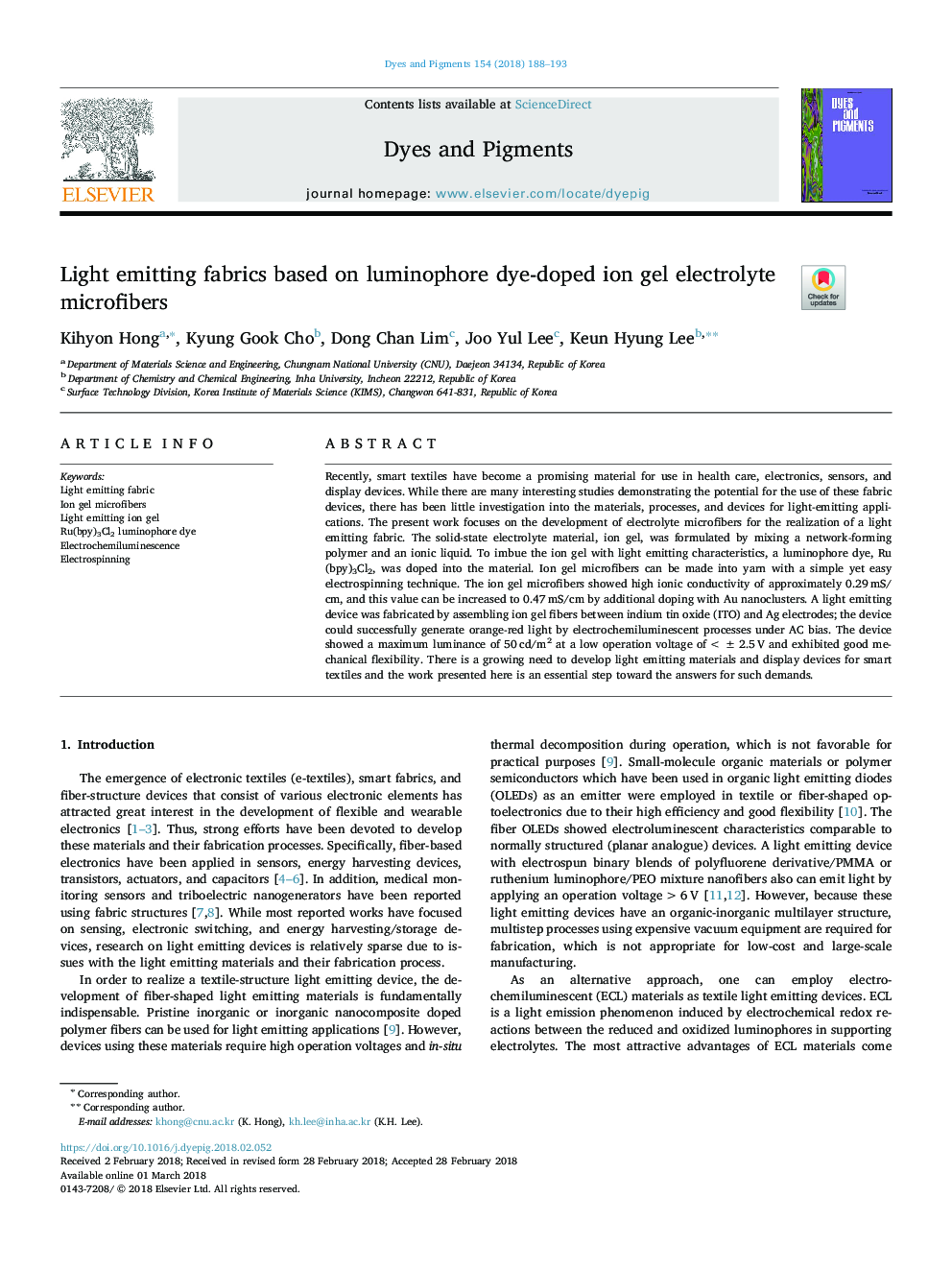| Article ID | Journal | Published Year | Pages | File Type |
|---|---|---|---|---|
| 6598784 | Dyes and Pigments | 2018 | 6 Pages |
Abstract
Recently, smart textiles have become a promising material for use in health care, electronics, sensors, and display devices. While there are many interesting studies demonstrating the potential for the use of these fabric devices, there has been little investigation into the materials, processes, and devices for light-emitting applications. The present work focuses on the development of electrolyte microfibers for the realization of a light emitting fabric. The solid-state electrolyte material, ion gel, was formulated by mixing a network-forming polymer and an ionic liquid. To imbue the ion gel with light emitting characteristics, a luminophore dye, Ru(bpy)3Cl2, was doped into the material. Ion gel microfibers can be made into yarn with a simple yet easy electrospinning technique. The ion gel microfibers showed high ionic conductivity of approximately 0.29â¯mS/cm, and this value can be increased to 0.47â¯mS/cm by additional doping with Au nanoclusters. A light emitting device was fabricated by assembling ion gel fibers between indium tin oxide (ITO) and Ag electrodes; the device could successfully generate orange-red light by electrochemiluminescent processes under AC bias. The device showed a maximum luminance of 50â¯cd/m2 at a low operation voltage of < ±2.5â¯V and exhibited good mechanical flexibility. There is a growing need to develop light emitting materials and display devices for smart textiles and the work presented here is an essential step toward the answers for such demands.
Related Topics
Physical Sciences and Engineering
Chemical Engineering
Chemical Engineering (General)
Authors
Kihyon Hong, Kyung Gook Cho, Dong Chan Lim, Joo Yul Lee, Keun Hyung Lee,
